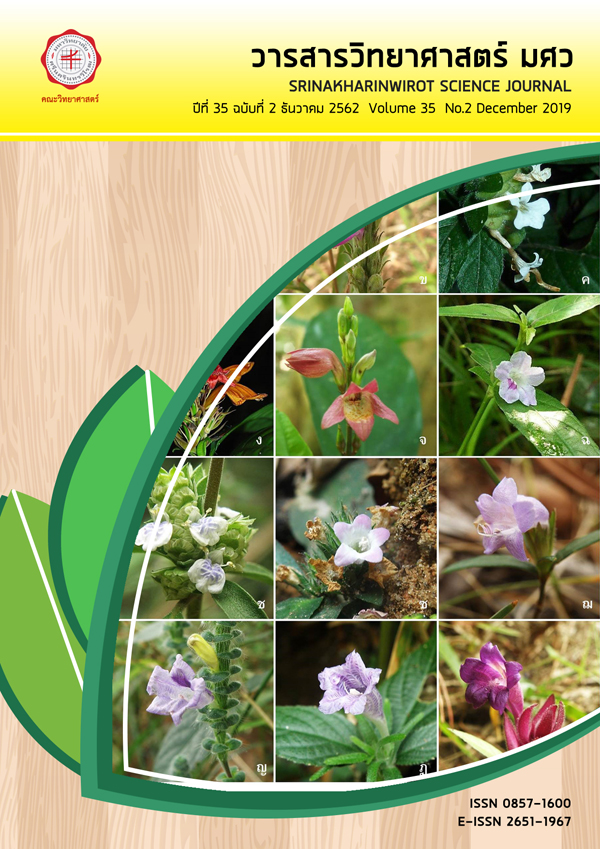Application of the Pup1-K46 Marker to Evaluate Phosphorus-Deficient Tolerance in Lowland Rice Cultivars from Southern Thailand
Keywords:
Pup1-K46, lowland rice, P deficiency toleranceAbstract
ABSTRACT Phosphorus (P) deficiency severely limits rice production, which threats to global food security. Selecting rice cultivars tolerant to P deficiency is a sustainable approach for this issue. In rice, a gene-based marker Phosphate uptake 1 (Pup1-K46) has been used to evaluate P-deficient tolerance. Indisputably, the Pup1-K46 region is highly conserved in an upland rice ecotype. Its existence reflects to the tolerance of P deficiency. Unfortunately, the influence of Pup1-K46 and its application in lowland rice cultivars remains neglect. In this study, we investigated the Pup1-K46 locus among 61 lowland rice cultivars. Subsequently, several lowland rice cultivars with and without the Pup1 locus were grown under the 0.5x low P (0.25 mg/l) and high P (5 mg/l) Yoshida solution for three weeks to examine the P-deficient tolerance of rice seedlings based on the existence of Pup1-K46. The results showed that the low P solution reduced rice biomass up to 20 percent reduction with diverse degrees, depending on the rice cultivars. It markedly lowered the total P concentration but raised P use efficiency (PUE) in the shoot and root tissues. The reduction of shoot growth due to the low P availability in the Pup1 positive group was significantly lower than the Pup1 negative group. Additionally, the higher shoot PUE in the Pup1 positive group confirmed their growth performance against P deficiency. These suggest that the Pup1 locus contributes to P-deficient tolerance in lowland rice cultivars.Keywords: Pup1-K46, lowland rice, Phosphorus-deficient toleranceDownloads
Download data is not yet available.
Downloads
Published
2019-08-30
How to Cite
Sok, B., Duangpan, S., Meesawat, U., & Klinnawee, L. (2019). Application of the Pup1-K46 Marker to Evaluate Phosphorus-Deficient Tolerance in Lowland Rice Cultivars from Southern Thailand. Science Essence Journal, 35(2), 17–30. Retrieved from https://ejournals.swu.ac.th/index.php/sej/article/view/10886
Issue
Section
Research Article








